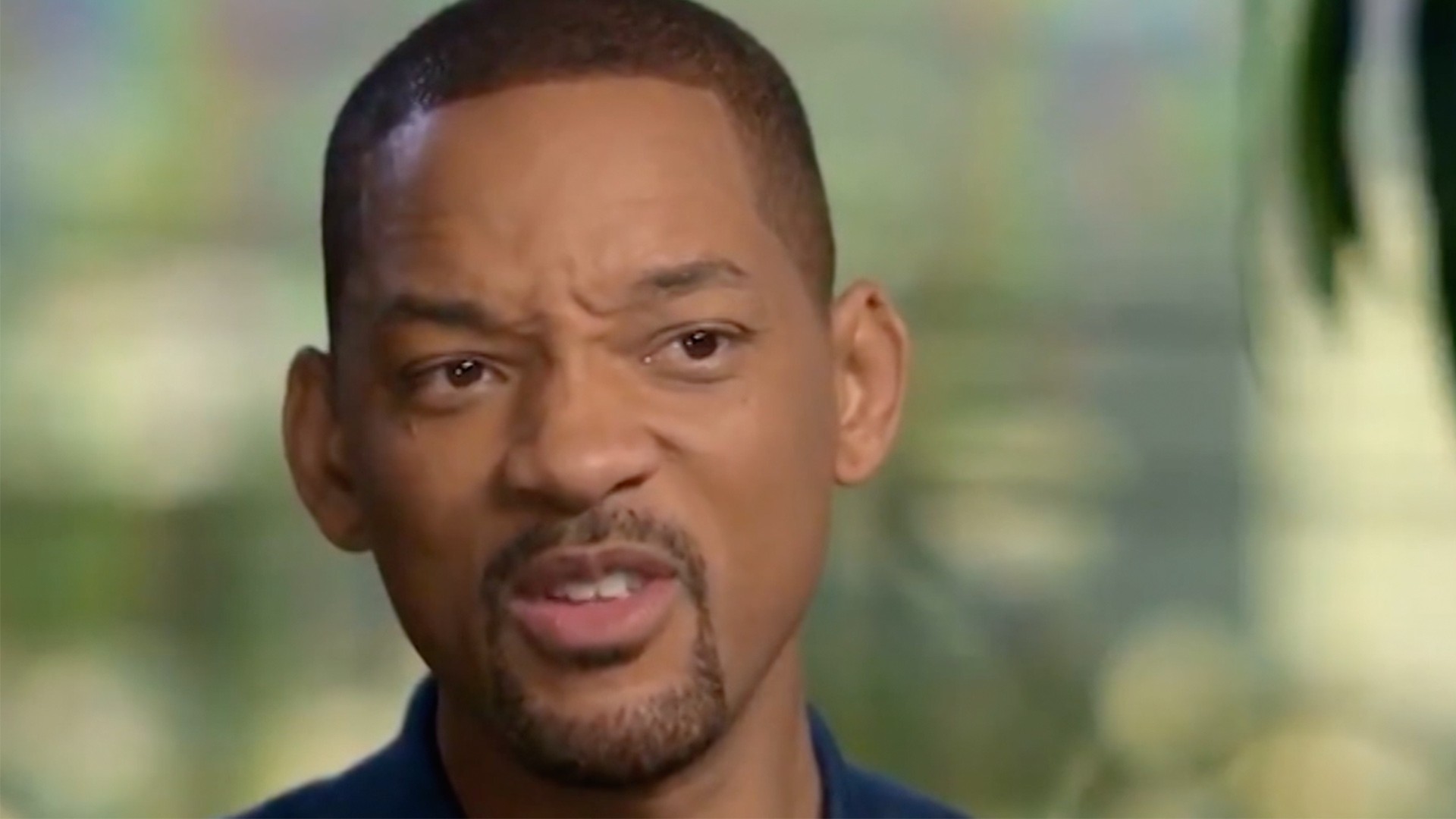From left to right: Bright, The Cloverfield Paradox, and Mute. Images courtesy of Netflix
If you’ve avoided reviews of Netflix’s latest original movie, The Cloverfield Paradox, allow me the honour of telling you it’s a hot mess.In a move that Indiewire says “made exhibition history,” Netflix aired the first ad for Paradox during the Super Bowl—then made the film available to watch right after the game. I’m not a big sportsball fan, but you could tell the ad struck a nerve from the excited chatter on Twitter.I certainly don’t want to downplay the significance of this. Even when films are released to little fanfare, they’re generally made available to the press before making it to audiences. They sometimes play a few festivals before a wider run. And they’re traditionally marketed for weeks or months before playing on a screen. The Cloverfield Paradox did away with all of that, strutting into our living rooms unannounced with all the confidence of a new Beyoncé album—and none of quality to back it up.It did have a minor leg up though. Paradox has brand recognition, serving as a (retrofitted) prequel to 2008’s Cloverfield and 2016’s 10 Cloverfield Lane. Like 10 Cloverfield Lane before it, Paradox was a standalone horror film before being rebranded and wedged into what is effectively an anthology series. That sleight of hand is sure to have done some of the heavy lifting of attracting people over to Netflix after the game.Chris O’Dowd loses an arm early on in an accident that doesn’t particularly make any sense. Even less sensical is the fact his arm is then sentient while detached. We may be in the realm of interdimensional cosmic fuckery here, but the film’s vague attempts at some kind of basis in scientific reality tend to fly out the airlock pretty spectacularly in moments like this. Exhibit B: somehow the astronaut protagonists lose their bearings completely when their space station rotates. It begets the question: how did any of these geniuses get cleared to travel to outer space? And does no one think to look out the window for the sun or star patterns? Anyways…Last December’s Bright, Netflix’s “first blockbuster”—which attempted to answer the question of “What if Middle Earth was actually present-day LA, and human cops were racist against orcs?”—was also smashed by critics. With nary a redeeming feature, it’s a no-holds-barred, genuinely unmitigated disaster as a piece of art. But according to Netflix’s mysterious proprietary metrics its been a major hit among users of the streaming service.The film opens with Will Smith’s vaguely racist (against orcs, in case you forgot) cop character murdering a fairy with a broom because the fairy has been getting into his bird feeder. That’s the kind of narrative logic that drives the rest of the film. If you’re looking for real-world referents, they’re hard to find. Is the fairy like a pesky squirrel? Who the hell beats squirrels to death?If that’s not enough, he then turns to a crowd of onlookers to declare that “fairy lives don’t matter today.” Wait, what did the fairy stand in for? Is Black Lives Matter the analogy? Imagine being the white screenwriter who thought that line would play well coming from a black cop. (For context, said white screenwriter is nepotism-personifying, all-around shit heel Max Landis.)The rest of the film is an unpleasant string of racist stereotypes (but they’re all orcs, get it?) combined with a half-baked rise-of-the-Dark-Lord subplot featuring kung fu fighting elves and a magic wand.Netflix claims that Bright was streamed 11 million times in its first three days on the site. I have to wonder if that says anything about the film though. It’s undoubtedly popular with some segment of its audience—or the ones passionate enough to voice their support on Rotten Tomatoes anyway. Despite a 27 percent critics score, its audience score sits at an impressive 86 percent. The Cloverfield Paradox is significantly less beloved across the board, with an 18 from critics and 55 from audiences.But the beauty of Netflix is that you can affordably hate-watch hot garbage like this. I was comfortable in my assumption that Bright would suck beyond belief when I pressed play, and I had no misgivings about it, beyond the slight pain that comes with knowing that I’ll be counted among those who want more content like this from Netflix. Generally speaking, I lost nothing by checking it out. My monthly Netflix bill will be the same this month as it was last month.Or maybe a film like Gigli, ridiculed in the press in 2003, could have found a cult following of viewers who could enjoy its so-bad-it’s-good cheesiness while the critical conversation was still actually happening.Of course, it being 2018, this conversation has extended beyond the economics of film exhibition or even personal tastes. There’s now also an online battle raging as a result of the disconnect between critics and audiences on the artistic merits of trash movies being unloaded onto the streaming site. In reality, plenty of popular and successful movies have been poorly reviewed before, but the conversation has shifted now. Like a politically illiterate asshole yelling “fake news” at every disagreeable opinion coming from the TV, Bright fans have decided there must be something rotten at the core of film criticism. And most prominent among them is Netflix’s chief content officer Ted Sarandos, who said that critics “speak to specific audiences who care about quality, or how objectively good or bad a movie is—not the masses who are critical for determining whether a film makes money.”(Yes, Sarandos really said that. He defended Bright by suggesting that it’s objectively bad and that the paying Netflix subscribers who made it a hit have no taste. One has to wonder how he justifies acquiring well-reviewed festival films like Okja and Mudbound with such a philosophy.)Netflix certainly wasn’t able to silence critics in either case though. And people have always had the option of seeing poorly reviewed movies in theatres (how many Transformers movies are we up to now?). With a sequel to Bright now in the works, it would be hard to argue that critics spoiled anyone’s fun.What the releases of Bright and Paradox seem to have changed is the nature of movie buzz—or its overreliance on delay and staggered distribution.Netflix’s original movies are likely not going change the game entirely, but they do add variety to the mix. Later this month, Duncan Jones’ Moon follow-up Mute will hit the streaming site. It’s one to look forward to, and likely wouldn’t exist without Netflix’s backing. Then again, Netflix has yet to release screeners to film critics, and Jones’ last film was Warcraft, so it might be wise to start managing expectations now.As I write this, Marvel’s Black Panther is making a strong case for the viability of theatrical exhibition. It has already achieved incredible buzz through early reviews and advance screenings. It’s breaking records in ticket pre-sales and will likely inject some much-needed energy into the Marvel cinematic universe, all by totally traditional means.Like most innovations, Netflix’s entry into first-run film exhibition is unlikely to cancel out what came before. But as always, it’s well positioned to give us more options, and some risk-free garbage already paid for by our all-inclusive monthly fees.Follow Frederick Blichert on Twitter.
In reality, plenty of popular and successful movies have been poorly reviewed before, but the conversation has shifted now. Like a politically illiterate asshole yelling “fake news” at every disagreeable opinion coming from the TV, Bright fans have decided there must be something rotten at the core of film criticism. And most prominent among them is Netflix’s chief content officer Ted Sarandos, who said that critics “speak to specific audiences who care about quality, or how objectively good or bad a movie is—not the masses who are critical for determining whether a film makes money.”(Yes, Sarandos really said that. He defended Bright by suggesting that it’s objectively bad and that the paying Netflix subscribers who made it a hit have no taste. One has to wonder how he justifies acquiring well-reviewed festival films like Okja and Mudbound with such a philosophy.)Netflix certainly wasn’t able to silence critics in either case though. And people have always had the option of seeing poorly reviewed movies in theatres (how many Transformers movies are we up to now?). With a sequel to Bright now in the works, it would be hard to argue that critics spoiled anyone’s fun.What the releases of Bright and Paradox seem to have changed is the nature of movie buzz—or its overreliance on delay and staggered distribution.Netflix’s original movies are likely not going change the game entirely, but they do add variety to the mix. Later this month, Duncan Jones’ Moon follow-up Mute will hit the streaming site. It’s one to look forward to, and likely wouldn’t exist without Netflix’s backing. Then again, Netflix has yet to release screeners to film critics, and Jones’ last film was Warcraft, so it might be wise to start managing expectations now.As I write this, Marvel’s Black Panther is making a strong case for the viability of theatrical exhibition. It has already achieved incredible buzz through early reviews and advance screenings. It’s breaking records in ticket pre-sales and will likely inject some much-needed energy into the Marvel cinematic universe, all by totally traditional means.Like most innovations, Netflix’s entry into first-run film exhibition is unlikely to cancel out what came before. But as always, it’s well positioned to give us more options, and some risk-free garbage already paid for by our all-inclusive monthly fees.Follow Frederick Blichert on Twitter.
Advertisement
Even without any heads up, critics wasted no time tearing into The Cloverfield Paradox. In fairness (and in my humble opinion) it’s not quite as bad as it’s been made out to be. It’s hardly “a desperate plunge into the abyss of shoddy sci-fi” or an “unmitigated disaster.” But it’s still pretty terrible. It’s a fun concept with an impressive international cast, including David Oyelowo, Daniel Brühl, Zhang Ziyi, and Chris O'Dowd. And it has some genuinely solid moments of body horror and sci-fi adventure, with echoes of Alien and Event Horizon. But yes, it has plenty of goofy misfires too.
Advertisement
Advertisement
Advertisement
Regardless of their audience or critic scores, movies like Bright and The Cloverfield Paradox benefitted immensely from a weirdly compressed bit of spotlight and availability, and don’t seem to have suffered much from the critical beatings they endured. Traditionally, they would have been released to theatres with little fanfare. Some would have gone to see them. Some would have liked them even. Others would have skipped the cost of a theatre ticket. In the months between their theatrical runs and home media releases, people would have largely forgotten about them, and that would have been it.Enter Netflix.With a subscription to the service, no one has to waste $13 on a movie they’re not sure about. But they can still satisfy their curiosity immediately. The practice of hate-watching or of appreciating a so-bad-it’s-good movie becomes easy, cheap, and immediate.It’s tempting to consider what other films might have benefited from this exhibition model. 2015’s Jupiter Ascending was released after months of delay, dulling some of the excitement a new Wachowski title might otherwise generate. It was met with bad reviews, and generally fizzled out. It’s spectacularly bad, but also a huge pleasure to watch. Unlike Bright, its sci-fi/fantasy premise of intergalactic royalty farming humans for eternal youth is campy, overacted, but most importantly fun (Channing Tatum playing a half-wolf/half-human soldier zipping around on hover skates is a site to see!). Maybe it could have found its niche online.
Advertisement

Advertisement
